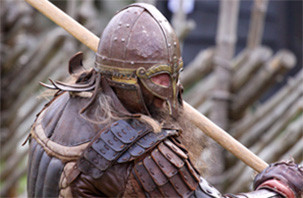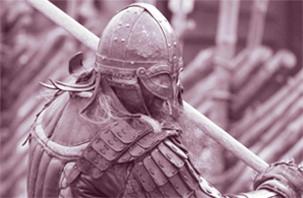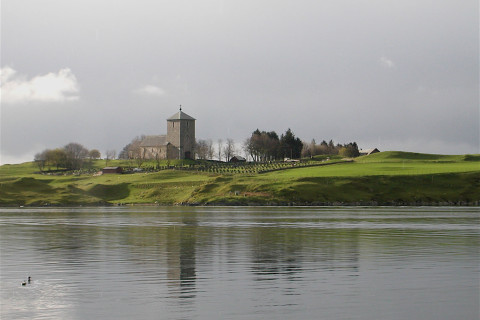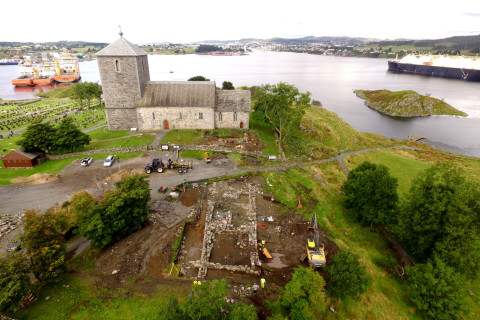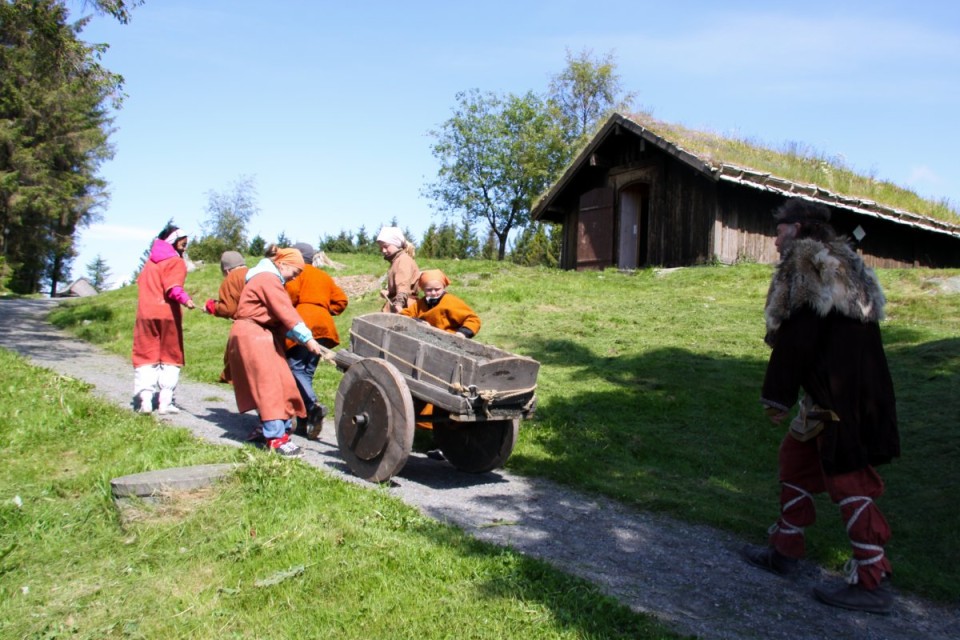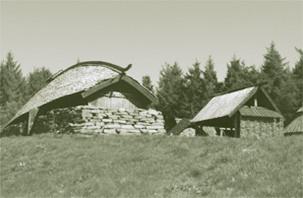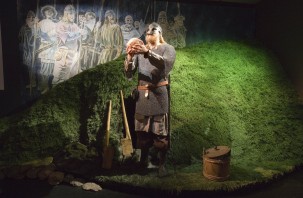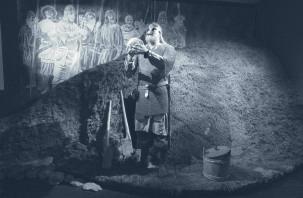Farm Yard
Text: Marit Synnøve Vea

Map of the Viking farm
The farmyard is fenced in according to traditional methods. There are several gates to go through. The paths are covered with gravel or wooden shutters. There are several paths that go through the woods for those who want some peace and quiet.
In the fields we grow various vegetables and different herbs that the Vikings would have used for flavoring, medicine and magic.
Sometimes you can also find animals on the Viking Farm. In the Viking Age goats, pigs, cows, sheep and horses would have been kept on such a farm. There would also have been more fields for barley, rye and flax and larger grasslands for livestock.
THE RUNE STONE
The rune stone close by the gateway stands as a memorial stone to King Halv, the great, great grandson of king Augvald whose name gives us the place name of Avaldsnes today.
The runes read: “Holmrygr raisti stain þan aft Halfr konungr” in Old Norse, which translates as “The rygr of the island raised this stone to the memory of King Halv.” The tribe here were called rygr (rugii) giving this region of Norway the name Rogaland
THE BURIAL MOUND
A burial mound lies just outside the fence. It is not authentic, but it was common practice to bury dead ancestors close to the farm.
In the Viking Age, dead people were buried with clothes, weapons and other equipment they could use in the hereafter. Important persons got very rich burial gifts with them to the grave, and their burial mounds could be much larger than this.

The runestone was erected in the old way. (Photo Marit S.Vea)
People who belonged to the royal family could be buried in ships which should sail them across to the next life. At Avaldsnes there are two such ships burials; Storhaug dated to 779 and Grønhaug dated to about 795.
THE TAR PIT
The tar pit was used to manufacture tar to preserve the wood used in Viking buildings and ships. Roots from certain pine trees would be collected in a mound, covered with turf and soil and then burnt slowly for several days. A hole and a channel under the pit allowed the tar to run out so that it could be collected in barrels.
This tar pit at the Viking Farm was first used to produce the tar that was painted on the longhouse after it was built in 1997.
THE MARKED PLACE
The marked place provides space for tents and stalls to be set up by visiting Viking traders and craftsmen.

Burning of tar for the longhouse. (Photo Marit Synnøve Vea)
Cloth and furs, bone and antler, glassbeads and jewelry, metals, soapstone and precious spiced were just some of the items widely traded in Viking Times.
GRILLS
By the seafront there are several grills that people can use. It is not allowed to use a one-time grills on the Viking Farm.
Back
